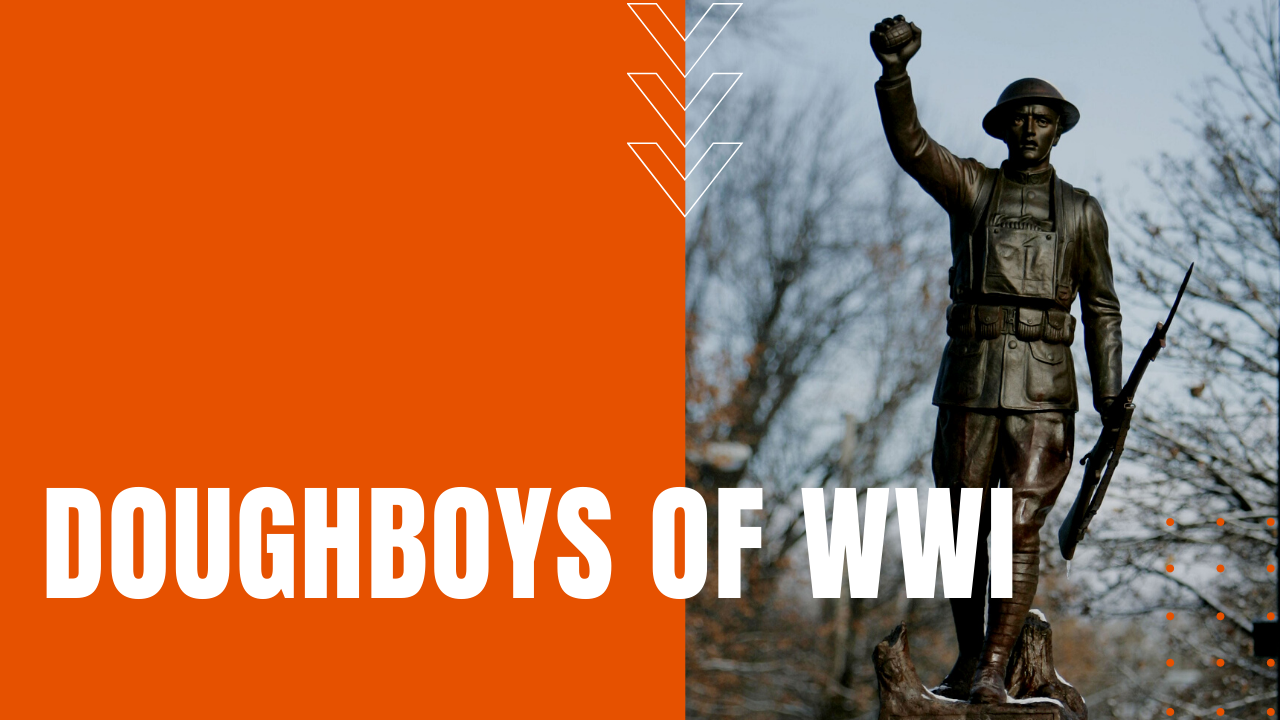Doughboys of World War One

When America entered the war to end all wars, the term Doughboy quickly became synonymous with American troops deployed to Europe as part of the American Expeditionary Forces.
Where did ‘Doughboy’ come from?
While the etymology of the term remains debatable, one potential origin dates back to the Mexican-American War of 1846 to 1848, when American infantrymen made long treks over dusty terrain, giving them the appearance of being covered in flour or dough.
When American troops became sufficiently coated in the dust of adobe soil, Mexicans began calling them “adobes,” which morphed into “dobies” and eventually “doughboys.”
Another explanation posited by journalist H.L. Mencken claimed the nickname could be traced to Continental Army soldiers who kept the piping on their uniforms white through the application of clay. When the troops got rained on, however, the clay on their uniforms turned into “doughy blobs,” leading to the doughboy moniker that carried on into World War One.
Nicknames like Doughboys weren’t unique to the trenches of World War One, since French troops were routinely referred to as “poilu,” or “hairy ones,” since the majority wore facial hair. British troops were known as “Tommys,” which was an abbreviation of the generic name Tommy Atkins, much like John Doe in American names.
Of the 4.7 million Doughboys who served in World War One, Frank Buckles was the last to die in 2011 at the age of 110. Today, the image of the doughboy persists in more than 100 commemorative statues across the United States, making Doughboys an enduring icon in American history.
